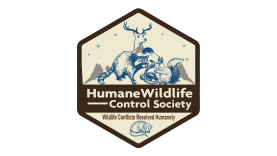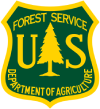Humane Wildlife Control in San Bernardino, CA
The Humane Wildlife Control Society recommends non-invasive solutions to resolve human-wildlife conflicts. This includes:
Determining if the issue needs to be addressed at all
Opting for preventative measures first
Opting for wildlife exclusion as opposed to trapping
If trapping is the only way to solve the problem do so humanely
The Humane Wildlife Control Society screens candidates prior to recommendation. Our process requires any company we recommend to meet the following criteria:
Is properly licensed in California for wildlife control
Carries appropriate business licenses and insurance
Complies with all California laws and regulations for wildlife control
Adheres to the humane principles listed above.
In San Bernardino, California we recommend Humane Wildlife Removal San Bernardino for professional wildlife control services. This is a private company that charges for their services.
Contact Information:
Wildlife Removal San Bernardino
909-453-4908
If you have any wildlife issues that can be handled by the state government agency for free, the California Wildlife Commission can help.
State Contact Information: (916) 445-0411
The State Department of Agriculture may also be able to address your wildlife problem for no charge.
USDA Contact Information: (916) 654-0466
The Critical Importance of Humane Wildlife Control in San Bernardino, California Public Health and Safety: Wildlife can be vectors for diseases such as rabies, hantavirus, and Lyme disease, posing a direct threat to public health. Humane control methods, such as exclusion and preventative measures, minimize the risk of disease transmission. Wildlife, including rodents, squirrels, and birds, can cause significant property damage through gnawing, burrowing, and nesting. Humane exclusion and deterrents prevent these animals from accessing structures and causing costly repairs. Indiscriminate lethal control can disrupt local ecosystems, leading to imbalances in predator-prey relationships and potentially increasing populations of other pest species. Humane methods focus on targeted and sustainable solutions that maintain ecological stability. California state law and local ordinances regulate wildlife management practices. Humane control aligns with these regulations, ensuring compliance and responsible stewardship.
San Bernardino’s diverse landscape, encompassing urban, suburban, and wildland-urban interface areas, creates a complex environment for human-wildlife interactions. Effective and humane wildlife control is essential for maintaining public health, protecting property, and preserving the region’s ecological balance.
Aggressive wildlife behavior, particularly from animals defending their territory or young, can lead to human injury. Humane techniques prioritize the safe removal and relocation of animals, reducing the potential for dangerous encounters.
Wildlife intrusion into residential and commercial structures can create unsanitary conditions, leading to the contamination of food and water sources.
Property Protection:
Larger animals, such as coyotes and bears, can pose a threat to livestock and domestic animals. Humane management strategies help mitigate these risks, protecting both property and animal welfare.
Damage to infrastructure, such as electrical wiring and water pipes, can result from wildlife activity. Humane control practices minimize this risk, ensuring the reliability of essential services.
Ecological Balance:
The removal of native wildlife can create ecological voids, which may be filled by invasive species. Humane control prioritizes the preservation of native wildlife populations.
Humane practices often involve habitat modification and preventative measures, which contribute to the long-term health and sustainability of local ecosystems.
Regulatory Compliance and Ethical Considerations:
Humane methods reflect ethical considerations for animal welfare, minimizing suffering and promoting coexistence.
The City of San Bernardino recognizes the importance of public trust and transparency in wildlife management. Humane practices build community confidence and support for responsible solutions.







